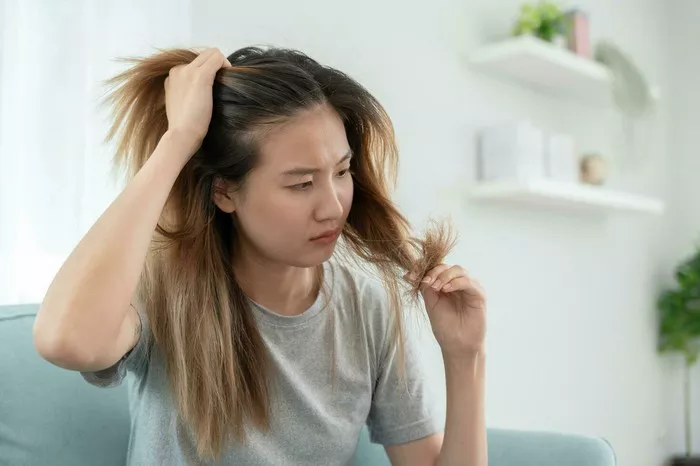Hair loss is a common concern affecting millions worldwide, and one key culprit is dihydrotestosterone (DHT). As a hair stylist, understanding DHT’s role helps you guide clients toward healthier hair.
This article explains DHT, its impact on hair loss, and practical, evidence-based strategies to reduce its effects. Written in simple language, this guide offers actionable advice for anyone seeking to combat hair thinning or loss.
What is DHT and How Does It Cause Hair Loss?
DHT is a hormone derived from testosterone through an enzyme called 5-alpha reductase. While essential for male development, excessive DHT can bind to hair follicles, shrinking them (a process called miniaturization). This shortens the hair growth cycle, leading to thinner strands or baldness.
Both men and women can experience DHT-related hair loss, often influenced by genetics, age, and hormonal changes.
Causes of High DHT Levels
Genetics: A family history of sensitivity to DHT increases risk.
Age: DHT levels may rise with age, particularly in men.
Hormonal Imbalances: Conditions like PCOS (in women) or thyroid issues can disrupt hormone balance.
Diet and Lifestyle: High sugar, saturated fats, and stress contribute to hormonal fluctuations.
Medical Treatments to Reduce DHT
Prescription Medications Finasteride: Blocks 5-alpha reductase, lowering DHT by ~60%. Requires a doctor’s prescription and may cause side effects like decreased libido.
Dutasteride: A stronger alternative, inhibiting more DHT but with similar side effects.
Topical Solutions
Minoxidil: Stimulates blood flow to follicles, promoting growth. Doesn’t lower DHT but complements DHT blockers.
Ketoconazole Shampoo: An antifungal (e.g., Nizoral®) that may reduce scalp DHT. Use 2–3 times weekly.
Natural Supplements and Herbs
Saw Palmetto: Blocks 5-alpha reductase. Studies show mixed results, but some users report reduced shedding.
Pumpkin Seed Oil: Rich in phytosterols, shown to improve hair density in trials.
Green Tea Extract: Contains EGCG, which may inhibit DHT. Drink 2–3 cups daily or apply topically.
Rosemary Oil: Comparable to minoxidil in promoting growth, per a 2015 study. Mix with a carrier oil and massage into the scalp.
Diet and Nutrition
DHT-Blocking Foods:
Zinc: Oysters, spinach, and lentils support hormone balance.
Lycopene: Tomatoes and watermelon neutralize DHT.
Omega-3s: Found in salmon and flaxseeds, they reduce inflammation.
Avoid: Excessive sugar, red meat, and processed foods, which can spike DHT.
Lifestyle Adjustments
Exercise: Moderate activity (e.g., 30-minute walks) balances hormones. Avoid overtraining, which raises cortisol.
Stress Management: Yoga, meditation, or deep breathing lowers cortisol, indirectly curbing DHT.
Sleep: Aim for 7–9 hours nightly to regulate hormone production.
Scalp Care Practices
Gentle Hair Care: Avoid tight hairstyles and harsh chemicals. Use sulfate-free shampoos.
Massages: Stimulate blood flow with 5-minute daily massages using fingertips or a scalp brush.
Microneedling: Use a derma roller (0.5mm) weekly to enhance product absorption and follicle health.
Conclusion
Reducing DHT requires a combination of medical, natural, and lifestyle strategies. While genetics play a role, these methods can slow hair loss and improve thickness. Encourage clients to consult healthcare providers before starting new treatments.
Related topics:
How Long Does Blonde Dye Last?
What’s the Basic Principles of Hair Physiology and Care?
Top 5 Conditioners That Work for Every Hair Type


